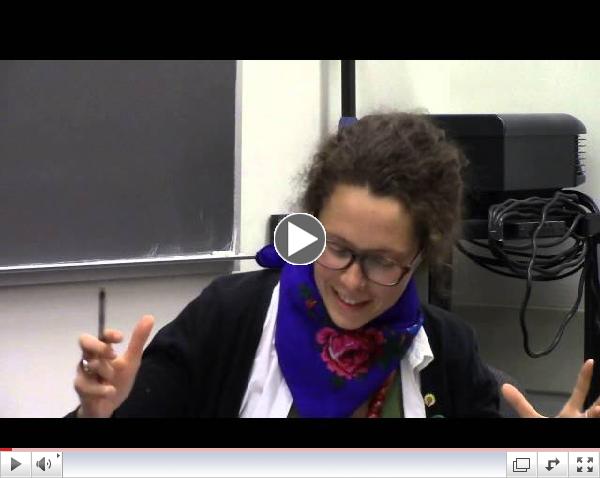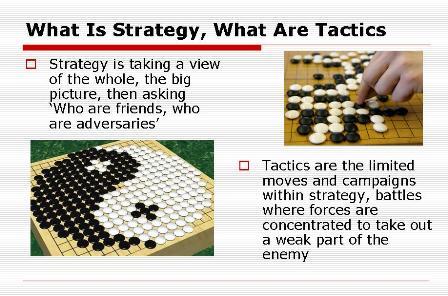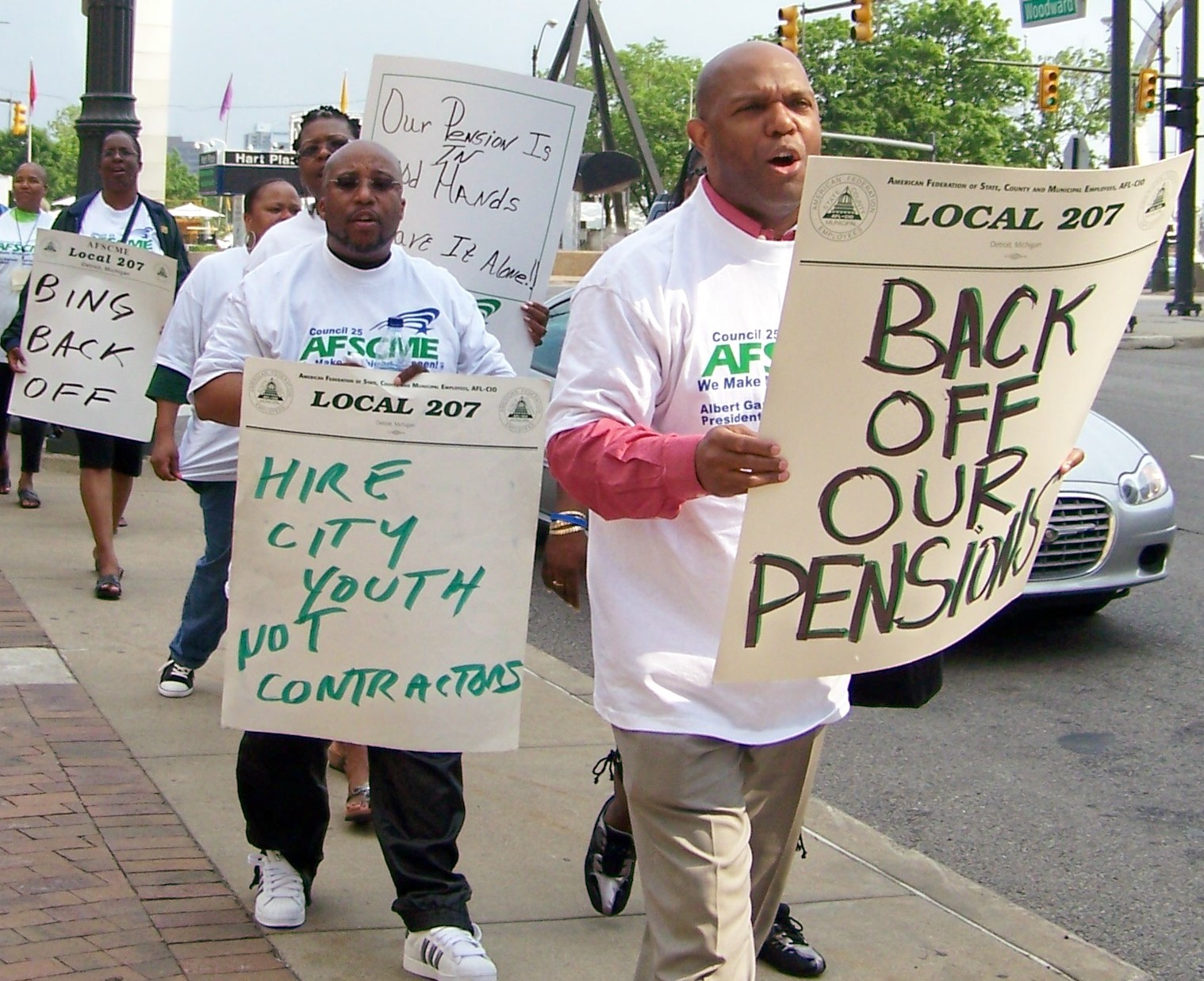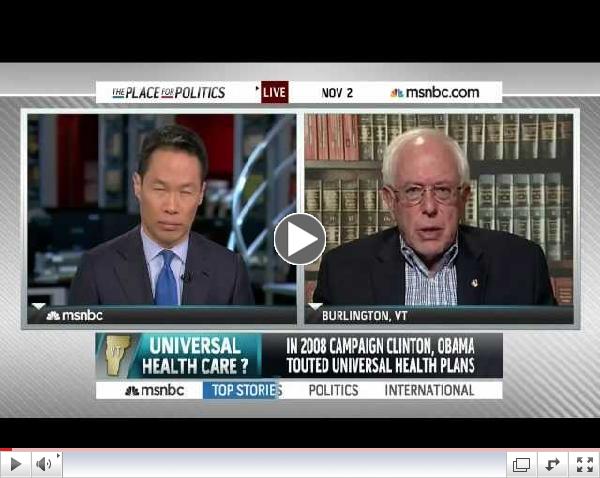 | |
Left Third-Party Organizing: Panel from the Left Forum, Including Talk by CCDS's Carl Davidson
|
|
 | |
Journal of the Black Left Unity Network
|
|

New CCDS Book Reporting on Vietnam
|
 The new annual edition of our journal of discussion and analysis is now out. More than 130 pages, it includes 20 articles on organizing, racism and the right. Cost is $10 plus shipping. Or get one by becoming a sustainer. Click the title to buy it directly. The new annual edition of our journal of discussion and analysis is now out. More than 130 pages, it includes 20 articles on organizing, racism and the right. Cost is $10 plus shipping. Or get one by becoming a sustainer. Click the title to buy it directly.
|
Blog of the Week... 
|
|
Radical Jesus:
A Graphic History of Faith  By Paul BuhleHerald Press By Paul BuhleHerald Press
|

Check out what CCDS has been doing...
|
 Keep On Keepin' On Keep On Keepin' OnStrategy and Tactics Slide Slow, Class and Privilege, the Green New Deal ...and other Short Posts on Tumblr by Carl Davidson
|

Edited by Carl Davidson Revolutionary Youth the the New Working Class: The Praxis Papers, the Port Authority Statement, the RYM Documents and other Lost Writings of SDS
Changemaker, 273pp, $22.50
For the full contents, click the link and view 'Preview' under the cover graphic.
|
|
By Randy Shannon, CCDS

"Everyone has the right to work, to free of employment, to just and favorable conditions of work and to protection against unemployment."
- United Nations Universal Declaration of Human Rights, December 10, 1948
I. Introduction
The "Great Recession" that began in 2007 has caused the greatest percent of job losses since the Great Depression of 1929. This crisis is the end of an era of unrestrained 'neo-liberal' capitalism that became public policy during the Reagan administration. The crisis marks a new level of instability with the growth of a global financial elite that targeted US workers and our trade unions after World War II.
|
|
Order Our
Full Employment Booklets
 |
...In a new and updated 2nd Edition
Capitalism may well collapse under its own excesses, but what would one propose to replace it? Margaret Thatcher's mantra was TINA...There Is No Alternative. David Schweickart's vision of "Economic Democracy" proposes a serious alternative. Even more fundamentally, it opens the door to thinking about alternatives. His may or may not turn out to be the definitive "successor system," but he is a leader in breaking out of the box. |
We Are Not What We Seem:
Black Nationalism and Class Struggle in the American Century
By Rod Bush, NYU Press, 1999
|
 A Memoir of the 1960s A Memoir of the 1960s
by Paul KrehbielAutumn Leaf Press, $25.64 | | Shades of Justice Video: Bringing Down a President, Ending a War |
|

Essays on Mondragon, Marx, Gramsci
and the Green and Solidarity Economies |
Solidarity Economy:What It's All About

Edited by Jenna Allard, Carl Davidson and Julie Matthaei
Buy it here...
|

- Foreword by Susan Brownmiller
- Preface by Ken Wachsberger
$37.50 + $6 shipping
|
|
Discussion Documents for a Militant Movement

By Don Hamerquist
|
|
|
|
An Invitation to CCDSers and Friends...
 'Budget Deal' Is 'Budget Deal' Is
a Lump of Coal
in Our Stocking
We're the Committees of Correspondence for Democracy and Socialism...Do you have friends who should see this? Pass it on...Do you have a blog of your own? Others you love to read every day? Well, this is a place where you can share access to them with the rest of your comrades. Just pick your greatest hits for the week and send them to us at carld717@gmail.com!
Most of all, it's urgent that you oppose war on Iran, defend voter rights, plan for 2014 races now, oppose austerity, support the 'Moral Mondays' in North Carolina, the Congressional Progressive Caucus' 'Back to Work Budget'! We're doing more than ever, and have big plans. So pay your dues, make a donation and become a sustainer. Do it Now! Check the link at the bottom... |
|
By Robert Borosage
OurFuture.org
DEc 12, 2013 - The bipartisan budget agreement released late Tuesday is being celebrated, largely for showing that a deal is possible.
The deal is admittedly small ball, reducing about half of the sequester cuts in 2014 and one-quarter in 2015, a total of $41.7 billion in increased outlays over the two years, according to the Congressional Budget Office, when the government is projected to spend something over $7.4 trillion.
The deal was reached by give and take. Democrats defended Social Security and Medicare from cuts Republicans wanted. Republicans defended billionaires and multinationals from taxes that Democrats wanted. Democrats got some relief from short-term sequester cuts; Republicans got increased long-term deficit reductions. Democrats saved domestic programs from deeper cuts; Republicans saved military programs.
But what is the actual effect on the economy? The deal has been trumpeted as having great beneficial effects, saving hundreds of thousands of jobs that would otherwise be cut, while boosting business confidence that Congress isn't completely dysfunctional and won't continue to "lurch from crisis to crisis," a central talking point of the rollout. Let's take a look at each in turn.
1. The Jobs Effect
Reducing the projected sequester cuts will save jobs that would otherwise have been cut. The Bipartisan Policy Center estimated that the full sequester cuts would cost about 700,000 jobs over the course of 2014, and slow growth by 0.6 percent. Reducing those cuts by half will reduce the carnage. Economist Joel Prakken of Macroeconomic Advisers projects the agreement might increase growth by one-quarter of a percentage point compared to continuing the full sequester cuts.
But half of the mindless across-the-board sequester cuts will continue in fiscal year 2014 and three-fourths in 2015. This will continue harsh effects on government services. If allocations are made proportionately (a big "if" given that Republican appropriators will have disproportionate power in rushed, backroom deals), back-of-the-hand estimates by one expert suggested Head Start will likely have to cut 150,000 children from the program instead of 180,000.
And the budget itself will remain constrictive. 2014 discretionary spending levels are still projected to be lower than they were in 2013 even before adjusting for inflation.
Moreover, the deal excludes the renewal of emergency jobless benefits. This will cut 1.3 million jobless and their families off of assistance by the end of the year. Renewal would put an estimated $26 billion directly into the economy over the course of the year, and generate an estimated 300,000 jobs. The CBO estimates that the net increase in federal outlays in fiscal 2014 from the bipartisan budget deal (sequester relief minus the spending cuts elsewhere) will be $23.3 billion. Not renewing emergency jobless benefits will simply erase the economic benefits of the budget deal.
In sum, the beatings will continue, with a small reduction in strokes. As Larry Mishel, Director of the Economic Policy Institute, concluded, the deal will "do essentially nothing to alter the disastrous trajectory that has characterized fiscal policy since 2011." And even that wiggle room word "essentially" is generous.
2. The Confidence Fairy Returns
The very fact of a deal is celebrated as likely to increase business confidence, end "fiscal uncertainty" caused by manufactured budget crises, and lead to more investment and more jobs....(Click title for more)
|
|

Banksters Think the Working Class, the Unemployed and Retirees Are Too Well Off
By Steven Rosenfeld
Alternet
Dec 10, 2013 - Across America, states, counties and cities are taking steps that will make retirement for ex-public employees much harsher. Courts, politicans and corporations are all working together to chip away at deferred wages: reducing pensions or eliminating promised healthcare, or both. Said simply, they're looting retirements and pushing people toward poverty.
This is the course unfolding [3] in federal bankruptcy court for the city of Detroit. It is what the Illinois Legislature passed [4] last week in a giant pension reform bill that excluded the city of Chicago, whose red ink reckoning comes next year. It's what's before California cities that have filed for backruptcy, or are seeking voter approval to cut into retirement benefits, such as Stockton, San Bernadino, Riverside and even wealthy San Jose.
In these and other government jurisdictions, the foremost question is not why legions of elected officals have failed to provide for the employees who did their jobs and made the cities function. Instead, the question seems to be how much they can plunder earned and pledged benefits, so they can avoid raising taxes or cutting services.
"News leaking out this week from the Motor City tells how the enormous gap between pensions workers earned and the money set aside to pay for them will be closed," wrote [5] David Cay Johnston, a Pulitzer Prize-winning reporter. "By stealing from workers."
The plundering of private sector pensions by corporate executives is nothing new. Books [6] and columns [5] by Johnston and other Pulitzer Prize winners [7] have detailed how most S&P 500 companies have diverted mountains of cash from employee pensions to make their quarterly earnings look bigger, boost stock prices and fatten their annual bonuses-all unconscionable and corrupt acts that were perfectly legal, says Johnston, thanks to a Congress that rewrote the legal fine print at the behest of corporate lobbyists.
But the newest development in America's unfolding retirement security crisis concerns public employees-people who worked in schools, public safety departments, etc. and often are exempt from Social Security because they have other public retirement plans. For years if not decades, top fiscal managers in a mix of cities, counties and states didn't put away [8] what's now hundreds of billions of dollars for civil service workers. Now, the same class of public sector executives are taking steps to cut these retirement packages. The question is not whether the cuts are coming, but how will they unfold.
Take Detroit's bankruptcy filing. Beyond the exceptionally nasty politics surrounding the largest municipal bankruptcy in America, what was pivotal last week was a ruling by the federal bankruptcy judge that classified the promised retirement benefits as "unsecured" debt. That's a subordinate class [9] to "secured" debt holders, such as investors who bought bonds, and it means that the Court can order reduction in retiree benefits. The fact that Michigan's state Constitution forbids this kind of breach of contract did not apply, the bankruptcy judge said, because a federal proceeding trumps state law. Without getting lost in the legal details, the big question is how big [10] a hit will Detroit's retirees take. A pension in the city averages $19,000 a year.
"This decision sets a terrible precedent," said [11] Karen Friedman, executive vice president and policy director for the Pension Rights Center. "Allowing a city to cut its retirees' pensions is a signal to other cities across the country that they don't need to fund their pensions responsibly and that they can renege on these promises when they run into trouble... These are not big pensions."
What's up next for Detroit is that the city's emergency financial manager-appointed by the state's Republican governor-will come back to court with a schedule of proposed benefit cuts and other renegotiated contracts. That's exactly the stage [12] the California city of Stockton is at in its bankruptcy. It proposes [13] to maintain its pensions but end retiree health benefits, raise the city's sales tax and pay some bondholders 50 cents per owed dollar. In another California city, San Bernardino, the process is further along, with the city already filing its plan to shortchange creditors and some of them-notably the California Public Employees Retirement System, or CalPERS-objecting [14] in court.
Outside bankruptcy court, a slightly different dance is occuring. Last week, the state of Illinois passed [15] a pension reform bill that cuts back pensions by reducing cost-of-living adjustments over three decades, compared to the previous inflation formula. Chicago, which has less than half of what's needed for its pensions and almost $900 million in unfunded retiree healthcare on top of that, hopes [15] to present its plan early next year.
In almost all of these cases, the priority was cutting benefits-either in pensions, health plans or both-as opposed to making up the shortfall elsewhere. There also is a parallel push to shut down access to pensions, which is a deferred salary, by offering the newest employees only the option of opening a retirement savings account, as well as paying a larger share of their salary for healthcare.
"The assault on retirees today is greater now than at any other time," said [16] the Pension Rights Center's Friedman. "We're seeing it in Detroit. We're seeing it in states that are trying to get rid of good pension plans. We're seeing it in major corporations that are transferring pensions to insurance companies. We're seeing it in Congress, where members are being heavily lobbied to introduce legislation that would allow multi-employer plans to cut retire pensions [a technicality that lowers the employer share]. And there are the ongoing efforts to cut back on Social Security."
What is taking shape is a nationwide retirement security crisis. Experts like Johnston and Friedman are saying that for the first time in decades, tens of millions of elderly people will slide into poverty as they will be left with little more than Social Security to live on-which now averages $1,230 a month, and that's before paying taxes on it, or Medicare fees....(Click title for more)
|
 | | Bernie Sanders: A Model for the Nation |
By Salvatore Aversa
OccupyDemocrats.com
The Affordable Care Act continues to plow ahead, despite Republican attempts to fight it at every turn. What is unfolding in front of us is nothing short of spectacular. The problems with healthcare.gov [1] are slowly being resolved which is helping more and more people sign up for affordable healthcare, many for the first time in their life. The law provides so much more than that, including standards for even the lowest level plans, protections for young adults 26 and younger, and the elimination of pre-existing plans. Of course, you will not hear the success stories on the news, because those stories are not nearly as sexy as the "Obama Lied" slogan they are so fond of.
The biggest downside of the ACA is the reliance on the private insurance industry. It does not have to be this way, however. There is yet another provision in the Affordable Care Act that can open the door for states to institute their own single-payer healthcare system. Other states have a public option, especially for those below a certain income level, but no state had instituted a true single-payer system. All of this has changed thanks to President Obama and the Affordable Care Act.
Vermont-Home of Ben and Jerry's, Maple Syrup, Bernie Sanders and the first state to pass marriage equality. Now, Vermont will be known for something that will impact every resident in the state.
The ACA provided states with federal funds to institute a Medicaid expansion. The states chose to expand the program also were able to set up their own state exchanges, which were relatively free from the problems the federal site had. Vermont decided [2] to take it a step further by setting up their very own single payer system.
The slogan of the program: Everybody in, nobody out.
The program will be fully operational by 2017, and will be funded through Medicare, Medicaid, federal money for the ACA given to Vermont, and a slight increase in taxes. In exchange, there will be no more premiums, deductibles, copay's, hospital bills or anything else aimed at making insurance companies a profit. Further, all hospitals and healthcare providers will now be nonprofit.
This system will provide an instant boost the state economy. On the one side, you have workers that no longer have to worry about paying medical costs or a monthly premium and are able to use that money for other things. On the other side, you have the burden of paying insurance taken off of the employers side, who will be able to use the saved money to provide a better wage and/or reinvest in their company through updated infrastructure and added jobs. It is a win-win solution.
To make sure that it is done right the first time, Vermont brought in a specialist who knows a thing or two about setting up a single-payer system.
Dr. William Hsaio, the Harvard health care economist who helped craft health systems in seven countries, was Vermont's adviser. He estimates that Vermont will save 25 percent per capita over the current system in administrative costs and other savings.
Many like to say that the United States has the best healthcare system in the world. The problem is we don't. Not even close. In fact, the only way you can get the best healthcare in the world, is if you are willing and able to pay for it. The United States can and must do better for its people.
Costs have to be held down - there is no reason why the U.S. has to pay twice the amount per capita as the next most costly system in the world (Norway's), and still not cover millions of its citizens. A Harvard Medical School study states that 45,000 Americans die each year from treatable diseases because they cannot afford to get treatment.
45,000 Americans die every single year because they cannot afford treatment, are you ready for that? That is 15 times the amount of people that died during the September 11, 2001, attacks, or perhaps for you Righty's out there you would rather see it put this way, 11,250 times the amount of people that died in the Benghazi attack. That equals 5 Americans that die every hour, of every day, of every year because of a preventable illness that was not taken care of due to lack of access and means.
Even once the Affordable Care Act wrinkles are ironed out, which they will be, and every America is covered, which will happen, that will not change the fact that all of this is being driven by a for-profit system by companies that only care about their bottom line. Despite rules in the ACA which prevent insurance companies from absolutely gouging their customers, insurance companies are not exactly know for their ethical behavior.
A single-payer system would all but eliminate anybody dying unnecessarily due to lack of access to healthcare. Our Declaration of Independence states, "We hold these truths to be self-evident, that all men are created equal [3], that they are endowed by their Creator with certain unalienable Rights, that among these are Life, Liberty and the pursuit of Happiness." How can somebody have life and happiness, without their health? Despite the glaring hypocrisy of rich, white males who owned slaves stating all men are created equal, we have come a long way from 1776. Yet when it comes to the very basic need, we are left to the whim of a business. Single-payer is inevitable, and the ACA is a giant step in that direction. We need must hold our officials to a higher standard which will get us there faster. 40,000 people a year is absolutely unacceptable. Vermont saw the writings on the wall. Will the rest of us?...(Click title for more)
|
 PDA's Tim Carpenter and Rep. Barbara Lee at SNAP Rally PDA's Tim Carpenter and Rep. Barbara Lee at SNAP Rally By Randy Shannon
PDAmerica.net
The enormous wealth disparity between the top 1% and the rest of America is an unsustainable economic and social injustice. We are committed to an economic recovery that employs all those willing and able, that houses all those needing shelter, and that imposes the cost based on the ability to pay.
The Economic and Social Justice Team is part of the following PDA platforms: We the People NOT We the Corporations, Tax Wall Street, Jobs and Fund Human Needs/Cut Pentagon Waste. We work on the following issues:
- Living Wage Jobs
- Trans Pacific Partnership (TPP)
- Student Debt
- Tax Wall Street (Financial Transaction Tax aka Robin Hood Tax)
- Affordable Housing/Mortgage Relief/Homeowner Protection
Economic and Social Justice Statistics and Facts
Oct. 2008 - fewer than 14 million households received Food Stamps - in Dec. 2012, 23 million households did
In the same period, benefits per household have dropped from $295 per month to $274, while food prices have escalated
5 years growth of disposable personal income hit a high of 25% in 1965 and has plummeted to -5% currently
In 2000, corporate profits were about $500 billion and 66% of the population was engaged in civilian employment
In 2013, corporate profits were nearly $2 trillion and fewer than 59% of the population was engaged in civilian employment
Banks are holding record amounts of cash
Legislation Our Team Has Endorsed
HR 1000 (Conyers - D-MI-13) Humphrey Hawkins Full Employment and Training Act
HR 1579 (Ellison - D-MN-05) Inclusive Prosperity Act
Team Accomplishments
Advocacy Alert - Demand Details and Oppose the Trans Pacific Partnership Fast Track
Advocacy Alert - Support the Robin Hood Tax
Advocacy Alert - Support Jobs for All (HR 1000)
BlogTalk Radio - Spreading the Word About Fair Trade
BlogTalk Radio - Conversation with Bill Fletcher, Jr. on the Labor Movement and Being Progressive
BlogTalk Radio - Meet Maggie Priebe - Working America (Union for working people without a union)
How You Can Get Involved
Join our Monthly Conference Call (1st Wednesday)
Join our Google Group
Join our Facebook page
Visit our Community Action Page
Coalition Partners
National Nurses United (NNU), Communications Workers of America, Public Citizen Global Trade Watch, Public Banking Institute, Citizens Trade Campaign, MoveOn.org Regional Organizers and Councils
Issue Team Leaders
Randy Shannon
|
Raul Castro Speech at Mandela Memorial
 | 'Eternal Glory' to Nelson Mandela
|
|
People's Assembly: Left Unity at Work in the UK

By Andrew Coates TheNorthStar.info
Dec 12, 2013 - Britain's Liberal-Conservative Coalition was founded in 2010 around a programme of austerity. The government laid down its immediate priority: deficit reduction. This, they argued, is because of the UK's high deficit. It obliged an immediate Spending Review. The previous Labour Cabinet had committed itself to its own programme of cuts. But its reluctance to agree to deeper reductions played a part, it is reported, in the Party's failure to attract the Liberal Democrats to last-ditch efforts to form a "progressive coalition."
As decisions to reduce spending were made, and filtered down to local authorities, a large number of anti-cuts campaigns sprang up. Ranging from those defending particular services, such as NHS hospitals, to Borough and County campaigns, these groups held meetings and demonstrations to protest against the effects of the Coalition's policies. A new Labour leader, Ed Miliband, elected with the support of most of the trade unions, did not actively join these protests, but was far from hostile towards them. Initiated by community groups and unions, with the visible participation of left organisations (Socialist Party, Socialist Workers Party and others), Labour parties joined in many marches and pickets of council meetings.
These protests were far bigger than most of the more internationally celebrated 'Occupy' movements', with the exception of the Spanish 'indignados'. The camp at Saint Paul's in London attracted fewer people than, say, marches against Conservative-led Suffolk County Council in Ipswich. In London hospital campaigners mobilised (and still mobilise) whole communities.
Efforts to channel these movements into classic 'front' bodies, such as the Socialist Party's TUSC 'anti-cuts committee' and, what is now (relabelled) the SWP Unite the Resistance (ex-Right to Work), came to little. By contrast the Coalition of Resistance - sponsored by Britain's largest trade union UNITE - came to wider prominence, and gained the affiliation and backing of hundreds of groups. The TUC held a successful national March for the Alternative in March 2011. It attracted over 100,000. A day of actions over public sector pensions that year was backed by large local rallies. The Ipswich one gathered over 1,500 people and was supported by the local Borough Labour Party.
But, as the Trade Union Congress pointed out as austerity began, those systematically opposed to heavy cuts in public spending, risked becoming isolated. This was borne out in Suffolk. Initial plans for a "big bang" privatisation of municipal services were delayed, a new Council leader elected and Head of Services appointed, and the original programme was introduced more slowly, but just as thoroughly. The most visible example is that the public Library Service is no longer publicly run. It is the responsibility of an Industrial and Providence Society, a private charity with no democratic structure, council funded, but with a heavy fund-raising role - and responsibility for its own reduction in provision. No effective protest against these changes has taken place.
The obvious conclusion is that something more than 'anti', anti-cuts in this instance, protests are needed. Michael Ford is not alone in the judgement that, "Reconstituting the labour movement so that it becomes a powerful expression of the working-class interest, and thereby a means of the working class giving a lead to everyone interested in a new and better society, is .... the main task for socialists to address." We could expand that claim: rebuilding popular backing and enthusiasm for left politics - that is recreating a wide constituency for left politics - is the bench-mark objective of socialist activism in the UK. Faced with the multiple difficulties we face our goals have to focus on the development of a new socialist consciousness in which, in E.P.Thompson's words, the working class is "present at its own making."
The People's Assembly was launched in February this year and held its first national rally in March. This appeared to fill the vacuum just sketched and offer potential for the bedrock socialism described. As Michael Ford stated, "Socialists and the unions need to reach out to each other more, integrate their work more closely where possible and elaborate common projects, of which the People's Assembly is an example." Owen Jones put it more bluntly, "Here's the rationale for the Assembly. It is unacceptable that - five years on from the near-collapse of the global financial system - there is no broad anti-austerity movement."
It would be accurate to observe (after Dave Renton, Britain's People's Assembly: an Auto-Critique) that the involvement of Counterfire, who had been behind the Coalition of Resistance (not to mention the Stop the War Coalition, StWC), was not universally greeted on the rest of the left (See Counterfire and the Coalition of Resistance: a critical analysis). But the political weight of those signing the People's Assembly's declaration, which included all the major trade unions, left Labour MPs, a Green MP, and respected quickly removed any doubt. Our UNITE Branch immediately signed up....(Click title for more)
|

On December 1, 2013, 100,000 people joined a march organised by the Front de Gauche to demand a "fiscal revolution" -- tax the rich -- and to oppose a January 1, 2014, increase in the regressive indirect value-added tax.
By Dick Nichols
Links
December 5, 2013 - Links International Journal of Socialist Renewal -- The formation of a "third pillar" in the Front de Gauche (Left Front) was finalised at a November 23-24 conference in Saint-Denis of delegates from four of the Left Front's smaller affiliates: Alternatives (Les Alternatifs), Convergence and Alternatives (Convergence et Alternatives), the Federation for a Social and Ecological Alternative (Fédération pour une Alternative Sociale et Ecologique) and the Anti-Capitalist Left (Gauche Anticapitaliste).
The 200-strong conference, which gave the name Together! (Ensemble!) to the new formation, also involved unaffiliated activists from the social movements and trade unions, all members or supporters of the Left Front.
Together! sees itself as a necessary third pole in the Left Front, alongside the Communist Party (Parti Communiste Français, PCF) and the Left Party (Parti de Gauche). The main bases for the amalgamation of the four groups are the perceived need to build the Left Front as an involving activist organisation with its own membership and to maintain complete independence of the Left Front from the ruling Socialist Party.
Joining the four groups in the new formation were a number of militants from the Gauche Unitaire (Uniting Left), co-founder in 2009 of the Left Front along with the PCF and Left Party. However, a majority of the Uniting Left decided not to particpate in the new group.
The Uniting Left has been participating with the four other groups in the bulletin Trair d'Union ("Hyphen"), as has another smaller Left Front affiliate, Republic and Socialism (République et Socialisme), which is also not part of the regroupment. The other smaller Left Front affiliate, the Worker Communist Party of France (Parti Communiste Ouvrier de France) has not participated either in Hyphen or the creation of Together!
Links International Journal of Socialist Renewal posts below the founding declaration of Together!, along with an account of a June 15 preparatory meeting that provides useful background on the process.
The translations are by Colin Falconer and taken from Nouveau Poireau Rouge....(Click title for more)
|
Film Review: Remember Who The Enemy Is
 By Mark Fisher By Mark Fisher TheNorthStar.info
Dec 8, 2013 - There's something so uncannily timely about The Hunger Games: Catching Fire that it's almost disturbing. In the UK over the past few weeks, there's been a palpable sense that the dominant reality system is juddering, that things are starting to give. There's an awakening from hedonic depressive slumber, and The Hunger Games: Catching Fire is not merely in tune with that, it's amplifying it. Explosion in the heart of the commodity? Yes, and fire causes more fire ...
I over-use the word 'delirium', but watching Catching Fire last week was a genuinely delirious experience. More than once I thought: How can I be watching this? How can this be allowed? One of the services Suzanne Collins has performed is to reveal the poverty, narrowness, and decadence of the 'freedoms' we enjoy in late, late capitalism. The mode of capture is hedonic conservatism. You can comment on anything (and your tweets may even be read out on TV), you can watch as much pornography as you like, but your ability to control your own life is minimal. Capital has insinuated itself everywhere, into our pleasures and our dreams as much as our work. You are kept hooked first with media circuses, then, if they fail, they send in the stormtrooper cops. The TV feed cuts out just before the cops start shooting. ![THE HUNGER GAMES: CATCHING FIRE - Official Trailer #2 (2013) [HQ]](https://thumbnail.constantcontact.com/remoting/v1/vthumb/YOUTUBE/dd398ccd5f724071a9578debb9c6f820) | Trailer: HUNGER GAMES: CATCHING FIRE
|
Ideology is a story more than it is a set of ideas, and Suzanne Collins deserves immense credit for producing what is nothing less than a counter-narrative to capitalist realism. Many of the 21st century's analyses of late capitalist capture - The Wire, The Thick Of It, Capitalist Realism itself - are in danger of offering a bad immanence, a realism about capitalist realism that can engender only a paralysing sense of the system's total closure. Collins gives us a way out, and someone to identify with/as - the revolutionary warrior-woman, Katniss. Sell the kids for food
The scale of the success of the mythos is integral to its importance. Young Adult Dystopia is not so much a literary genre as a way of life for the generations cast adrift and sold out after 2008. Capital - now using nihiliberal rather than neoliberal modes of governance - doesn't have any solution except to load the young with debt and precarity. The rosy promises of neoliberalism are gone, but capitalist realism continues: there's no alternative, sorry. We had it but you can't, and that's just how things are, OK? The primary audience for Collins' novels was teenage and female, and instead of feeding them more boarding school Fantasy or Vampiary romance, Collins has been - quietly but in plain sight - training them to be revolutionaries.
Perhaps the most remarkable thing about the Hunger Games is the way it simply presupposes that revolution is necessary. The problems are logistical, not ethical, and the issue is simply how and when revolution can be made to happen, not if it should happen at all. Remember who the enemy is - a message, a hailing, an ethical demand that calls out through the screen to us .... that calls out to a collectivity that can only be built through class consciousness .... (And what has Collins achieved here if not an intersectional analysis and decoding of the way that class, gender, race and colonial power work together - not in the pious academic register of the Vampires' Castle, but in the mythographic core of popular culture - functioning not as a delibidinizing demand for more thinking, more guilt, but as an inciting call to build new collectivities.)
There's a punk immanence about Catching Fire which I haven't seen in any cultural product for a long time - a contagious self-reflexivity that bleeds out from the film and corrodes the commodity culture that frames it. Adverts for the movie seem like they belong in the movie, and, rather than a case of empty self-referentiality, this has the effect of decoding dominant social reality. Suddenly, the dreary gloss of capital's promotional cyber-blitz becomes de-naturalised. If the movie calls out to us through the screen, we also pass over into its world, which turns out to be ours, seen clearer now some distracting scenery is removed. ...(Click title for more)
|
 The era of assumed male entitlement to all the positions of power and wealth is coming to an end, says an author of a controversial new book The era of assumed male entitlement to all the positions of power and wealth is coming to an end, says an author of a controversial new book
By Mark Karlin
Truthout
Nov 25, 2013 - Is there hope that the ugly, hateful era of the angry white male might come to an end in the United States?
Michael Kimmel, author of 'Angry White Men: American Masculinity at the End of an Era,' believes that the incendiary rage of many resentful white males will ultimately succumb to an altered cultural context.
"Angry white men rage for our attention, yes, but that era of assumed male entitlement to all the positions of power and wealth is coming to an end." Kimmel told Truthout. "Men can be dragged kicking and screaming into that inevitable future, or we can accept it and ask what it means for us."
Truthout recently interviewed Kimmel, who is a sociology professor and executive director at the Center of the Study of Men and Masculinities at Stony Brook University in New York.
Mark Karlin: What is the demographic you refer to as angry white males in the US. The stereotypes are that they are generally Southern, or rural, or less educated or residents of exurbia? What is your breakdown?
Michael Kimmel: Angry white men are everywhere geographically! I look at some groups, like the extreme right wing, who might tend to be more small-town, exurban. Many are suburban, from those sprawling suburbs that extend far into what used to be "rural America." But many of the men I discuss - say men's rights activists or fathers' rights activists, or the men who are violent against women, or guys who go postal - come from all over the country.
You talk about the transition from anxiety to explosive emotional anger among the actual and perceived growing loss of entitlement and privilege among white males. You use the phrase, "the cultural construction of aggrieved entitlement." Does that translate to, "white males are mad as hell that women and minorities aren't kept in their place anymore by white men, and the white men are losing their jobs and patriarchal status as a result"?
Nicely put! Some white males are mad as hell not that minorities or gays or women aren't "kept in their place" anymore, but more that they feel that "they" are taking places that were "rightfully ours." Race (being white) and gender (being men) are the frameworks they use to describe what I think is actually a phenomenon that has more to do with class.
You dissect "The Rage of the American Working Man" in Chapter Six. Of course, the inevitable question is why is so much of that rage aimed at minorities instead of upward at primarily other white males who are exploiting them?
Good question, I ask myself this all the time. Sometimes, in my interviews, I felt like I was listening to a gendered version of Thomas Frank's book, What's the Matter with Kansas? as I listened to men blame those below them on the socioeconomic ladder for problems that were caused by those far above them. Such misdirection is massaged and manipulated. Men's anger is real - in the sense that they have often been badly done by. But just to say that it's a real feeling doesn't make it "true" - that is, it is not an accurate analysis of what caused their situation. Just remember that the anger of men who feel (or who actually have been) dispossessed can go to the right or the left. Timothy McVeigh or Tom Joad. ...(Click title for more)
|
|
Become a CCDS member today!
 The
time is long past for 'Lone Rangers'. Being a socialist by your self is
no fun and doesn't help much. Join CCDS today--$36 regular, $48
household and $18 youth. The
time is long past for 'Lone Rangers'. Being a socialist by your self is
no fun and doesn't help much. Join CCDS today--$36 regular, $48
household and $18 youth.
Better yet, beome a sustainer at $20 per month,
and we'll send you a copy of Jack O'Dell's new book, 'Climbing Jacobs
Ladder,' drawing on the lessons of the movement in the South in the
1950s and 1960s.
Solidarity, Carl Davidson, CCDS |
|
|